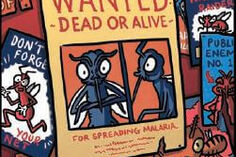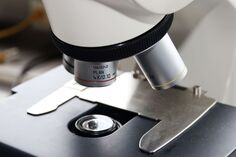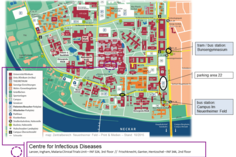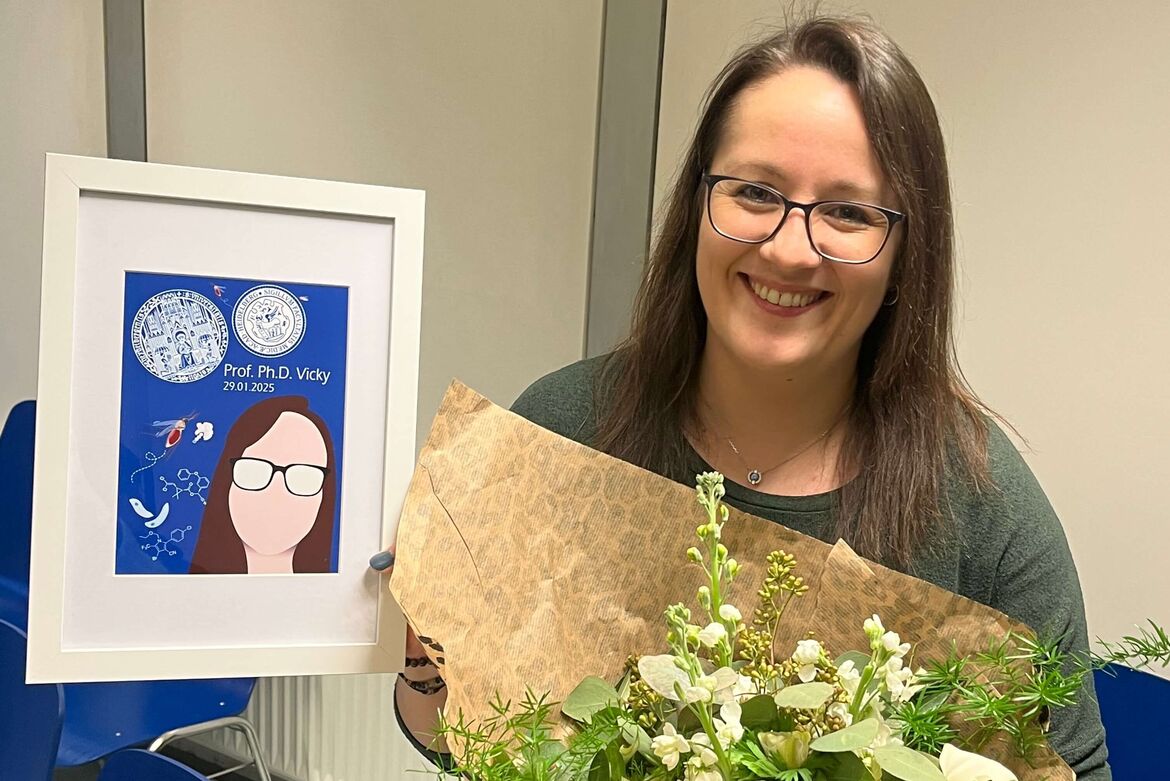
Die AG Ingham im Detail
Aktuelle Mitarbeiter*innen
Victoria Ingham, Ph.D. (AG-Leiterin, seit 2020)
Dr. Juliane Hartke (Postdoc, seit 2023)
Wasim Hussain, Ph.D. (Postdoc, seit 2023)
Zahra Rezaei, Ph.D. (Postdoc, seit 2023)
Antonia Böhmert (PhD student, seit 2022)
Ash Hariaharan (PhD student, seit 2025)
Patrick Hörner (PhD student, seit 2021)
Rhiannon Logan (PhD student, seit 2021)
Carlos Lol (PhD student, seit 2022)
Leslly Noumbouwo Ndifo (PhD student, seit 2025)
Natalie Portwood (PhD student, seit 2023)
Christoph Wenz (PhD student, seit 2023)
Yerin Jung (Technische Assistentin)
Julia Mäurer (Technische Assistentin)
Rebecca Schwarz (Technische Assistentin)
& wechselnde BSc- und MSc-Studierende :-)
Forschungsschwerpunkt
Insektizidresistenz (IR) ist heute in vielen Teilen der Welt, die zur Eindämmung von durch Vektoren übertragenen Krankheiten auf Insektizide angewiesen sind, weit verbreitet. So wurden beispielsweise über 80 % des Rückgangs der Malaria-Fälle zwischen 2000 und 2015 insektizidbasierten Maßnahmen wie insektizidbehandelten Moskitonetzen und dem Besprühen von Innenräumen zugeschrieben. Der Einsatz von Insektiziden führt zu einem intensiven Selektionsdruck auf die Moskito-Vektoren, was wiederum zu hohen IR-Werten führt
Insektizidresistenz (IR) bei der wichtigsten Malariaüberträgerart (Anopheles gambiae) wird durch fünf charakterisierte Resistenzmechanismen verursacht (Abbildung 1), ist aber wahrscheinlich noch viel komplexer. So führt beispielsweise eine subletale Insektizidexposition, die in Gebieten mit hohem Resistenzniveau auftritt, zu enormen Veränderungen des zugrunde liegenden Transkriptoms der Anopheles-Mücken. Darüber hinaus deuten zahlreiche Belege darauf hin, dass diese subletale Exposition zu großen Veränderungen in der zugrunde liegenden Biologie führt, wie z. B. Veränderungen im Mikrobiom oder im Redoxzustand.
Meine Forschungsgruppe untersucht die Auswirkungen des Phänotyps der Insektizidresistenz auf die Entwicklung von Plasmodium in vivo. Veränderungen in der Biologie der Stechmücken und eine mögliche Exposition gegenüber insektiziden Wirkstoffen haben wahrscheinlich enorme Auswirkungen auf die Entwicklung des Malariaparasiten im Stechmückenvektor (Abbildung 2). Um dies zu untersuchen, kombinieren wir Bioinformatik und Molekularbiologie, um die für diese Prozesse wichtigen Signalwege und Gene zu identifizieren und ihre Auswirkungen auf die beiden wichtigsten Phänotypen zu charakterisieren: Vektorkompetenz und IR-Status.

Ausgewählte Publikationen der AG Ingham
=> Originalarbeiten
Worku N, Sanou A, Hartke J, Morris M, Cissé F, Ouédraogo S, Tapsoba M, Vallon N, Akilu TD, Worku L, Guelbeogo MW, Ingham VA (2025) Insecticide resistant Anopheles from Ethiopia but not Burkina Faso show a microbiota composition shift upon insecticide exposure. Parasit Vectors. 2025 Jan 20;18(1):17. doi: 10.1186/s13071-024-06638-2. PMID: 39833936; PMCID: PMC11748507.
Gandara L, Jacoby R, Laurent F, Spatuzzi M, Vlachopoulos N, Borst NO, Ekmen G, Potel CM, Garrido-Rodriguez M, Böhmert AL, Misunou N, Bartmanski BJ, Li XC, Kutra D, Hériché JK, Tischer C, Zimmermann-Kogadeeva M, Ingham VA, Savitski MM, Masson JB, Zimmermann M, Crocker J (2024) Pervasive sublethal effects of agrochemicals on insects at environmentally relevant concentrations. Science. Oct 25;386(6720):446-453. doi: 10.1126/science.ado0251. Epub 2024 Oct 24. (PMID: 39446951) / siehe auch den entsprechenden Artikel in der FAZ
Logan RAE, Mäurer JB, Wapler C, Ingham VA (2024) Uridine diphosphate (UDP)-glycosyltransferases (UGTs) are associated with insecticide resistance in the major malaria vectors Anopheles gambiae s.l. and Anopheles funestus. Sci Rep. Aug 27;14(1):19821. doi: 10.1038/s41598-024-70713-y. (PMID: 39191827; PMCID: PMC11350197)
Oke CE, Ingham VA, Walling CA, Reece SE (2022) Vector control: agents of selection on malaria parasites? Trends Parasitol. Oct;38(10):890-903. doi: 10.1016/j.pt.2022.07.006. Epub 2022 Aug 16. (PMID: 35981937)
Williams J, Ingham VA, Morris M, Toé KH, Hien AS, Morgan JC, Dabiré RK, Guelbéogo WM, Sagnon N, Ranson H (2022) Sympatric Populations of the Anopheles gambiae Complex in Southwest Burkina Faso Evolve Multiple Diverse Resistance Mechanisms in Response to Intense Selection Pressure with Pyrethroids. Insects. Feb 28;13(3):247. doi: 10.3390/insects13030247. (PMID: 35323544; PMCID: PMC8955173)
Ingham VA, Tennessen JA, Lucas ER, Elg S, Yates HC, Carson J, Guelbeogo WM, Sagnon N, Hughes GL, Heinz E, Neafsey DE, Ranson H (2021) Integration of whole genome sequencing and transcriptomics reveals a complex picture of the reestablishment of insecticide resistance in the major malaria vector Anopheles coluzzii. PLoS Genet. Dec 23;17(12):e1009970. doi: 10.1371/journal.pgen.1009970. (PMID: 34941884; PMCID: PMC8741062)
Ingham VA, Elg S, Nagi SC, Dondelinger F (2021) Capturing the transcription factor interactome in response to sub-lethal insecticide exposure. Curr Res Insect Sci.1:None. doi: 10.1016/j.cris.2021.100018. (PMID: 34977825; PMCID: PMC8702396)
Ingham, V. A., Brown, F., & Ranson, H. (2021). Transcriptomic analysis reveals pronounced changes in gene expression due to sub-lethal pyrethroid exposure and ageing in insecticide resistance Anopheles coluzzii. BMC genomics, 22(1), 337. (PMID: 33971808)
Tennessen, J. A., Ingham, V. A., Toé, K. H., Guelbéogo, W. M., Sagnon, N., Kuzma, R., Ranson, H., & Neafsey, D. E. (2021). A population genomic unveiling of a new cryptic mosquito taxon within the malaria-transmitting Anopheles gambiae complex. Molecular ecology, 30(3), 775–790. (PMID: 33253481)
Lees, R. S., Ambrose, P., Williams, J., Morgan, J., Praulins, G., Ingham, V. A., Williams, C. T., Logan, R., Ismail, H. M., & Malone, D. (2020). Tenebenal: a meta-diamide with potential for use as a novel mode of action insecticide for public health. Malaria journal, 19(1), 398. (PMID: 33168015)
Brown F, Paton DG, Catteruccia F, Ranson H, Ingham VA. (2020) A steroid hormone agonist reduces female fitness in insecticide-resistant Anopheles populations. Insect Biochem Mol Biol. Jun;121:103372. doi: 10.1016/j.ibmb.2020.103372. Epub 2020 Apr 8. (PMID: 32276112)
Minetti C, Ingham VA, Ranson H. (2020) Effects of insecticide resistance and exposure on Plasmodium development in Anopheles mosquitoes. Curr Opin Insect Sci. Jun;39:42-49. doi: 10.1016/j.cois.2019.12.001. Epub 2020 Jan 30. (PMID: 32109860) Review.
Ingham VA, Bennett A, Peng D, Wagstaff SC, Ranson H. (2020) IR-TEx: An Open Source Data Integration Tool for Big Data Transcriptomics Designed for the Malaria Vector Anopheles gambiae. J Vis Exp. Jan 15;(155). doi: 10.3791/60721. (PMID: 32009657)
Ingham VA, Anthousi A, Douris V, Harding NJ, Lycett G, Morris M, Vontas J, Ranson H. (2020) A sensory appendage protein protects malaria vectors from pyrethroids. Nature. Jan;577(7790):376-380. doi: 10.1038/s41586-019-1864-1. Epub 2019 Dec 25. (PMID: 31875852) Free PMC article.
Williams J, Flood L, Praulins G, Ingham VA, Morgan J, Lees RS, Ranson H. (2019) Characterisation of Anopheles strains used for laboratory screening of new vector control products. Parasit Vectors. Nov 5;12(1):522. doi: 10.1186/s13071-019-3774-3. (PMID: 31690332) Free PMC article.
Ingham VA, Wagstaff S, Ranson H. (2018) Transcriptomic meta-signatures identified in Anopheles gambiae populations reveal previously undetected insecticide resistance mechanisms. Nat Commun. 2018 Dec 11;9(1):5282. doi: 10.1038/s41467-018-07615-x. (PMID: 30538253) Free PMC article.
Pignatelli P, Ingham VA, Balabanidou V, Vontas J, Lycett G, Ranson H. (2018) The Anopheles gambiae ATP-binding cassette transporter family: phylogenetic analysis and tissue localization provide clues on function and role in insecticide resistance. Insect Mol Biol. 2018 Feb;27(1):110-122. doi: 10.1111/imb.12351. Epub 2017 Oct 25. (PMID: 29068552)
Ingham VA, Pignatelli P, Moore JD, Wagstaff S, Ranson H. (2017) The transcription factor Maf-S regulates metabolic resistance to insecticides in the malaria vector Anopheles gambiae. BMC Genomics. 2017 Aug 30;18(1):669. doi: 10.1186/s12864-017-4086-7. (PMID: 28854876) Free PMC article.
Ingham VA, Jones CM, Pignatelli P, Balabanidou V, Vontas J, Wagstaff SC, Moore JD, Ranson H. (2014) Dissecting the organ specificity of insecticide resistance candidate genes in Anopheles gambiae: known and novel candidate genes. BMC Genomics. 2014 Nov 25;15(1):1018. doi: 10.1186/1471-2164-15-1018.(PMID: 25421852) Free PMC article.
=> Übersichtsartikel
Böhmert AL, Logan RAE, Portwood NM, Hartke J, Ingham VI (2024) A descriptive review of next-generation insecticide-treated bed nets for malaria control. Frontiers in Malaria. REVIEW doi:10.3389/fmala.2024.1337572. ISSN=2813-7396
Ingham, VI, Grigoraki L, Ranson H (2023) Pyrethroid resistance mechanisms in the major malaria vector species complex. Entomologia Generalis. Vol. 43 Number 3, p. 515 - 526. DOI: 10.1127/entomologia/2023/1880
=> Preprints
Netsanet Worku, Antoine Sanou, Juiane Hartke et al. Insecticide resistant Anopheles from Ethiopia but not Burkina Faso show a microbiome composition shift upon insecticide exposure., 23 October 2024, PREPRINT (Version 1) available at Research Square [https://doi.org/10.21203/rs.3.rs-5150012/v1]
Victoria Ingham, Sanjay Nagi. Genomic Profiling of Insecticide Resistance in Malaria Vectors: Insights into Molecular Mechanisms., 14 February 2024, PREPRINT (Version 1) available at Research Square [https://doi.org/10.21203/rs.3.rs-3910702/v1]










